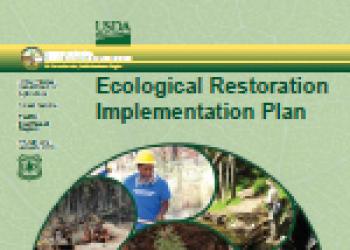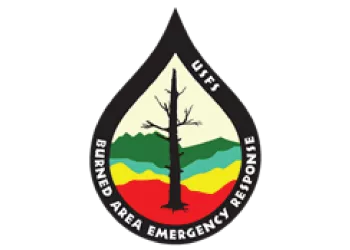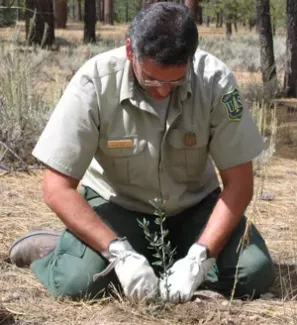Forest Management
Effective beginning 06/04/2025: This website, and all linked websites under the control of the agency is under review and content may change.
The agency’s top priority is to maintain and improve the health, diversity, and productivity of the nation’s forests and grasslands to meet the needs of current and future generations. Forest management focuses on managing vegetation, restoring ecosystems, reducing hazards, and maintaining forest health.
Reforestation Strategy

The Forest Service has invested more than $100 million in reforestation this year – more than three times the investment in previous years – thanks to the Repairing Existing Public Land by Adding Necessary Trees (REPLANT) Act made possible by the Bipartisan Infrastructure Law. These historic investments will help rebuild in the aftermath of devastating wildfires and strengthen America’s forestlands.
Climate Change Resource Center

The Climate Change Resource Center (CCRC) connects land managers and decision makers with useable science to address climate change in natural resources planning and management.
Burned Area Emergency Response (BAER)

The Burned Area Emergency Response (BAER) program addresses these situations with the goal of protecting life, property, water quality, and deteriorated ecosystems from further damage after the fire is out. Concern for possible post-fire effects on fish, wildlife, archeological sites and endangered species is often a primary consideration in the development of a BAER plan.
Resource Management
This is the day-to-day management that Forest Service personnel undertake to utilize and protect the resources for current and future generations.
Here you will find information on fire management, hazardous fuels reduction, resource management, and more.
Schedule of Proposed Actions

An Arborist plants a native species.
Photo Credit: Forest ServiceFour times a year, the San Bernardino National Forest publishes a quarterly Schedule of Proposed Actions (SOPA) which provides project information, status, and contacts.
San Bernardino National Forest Plan
The Forest Plan is available online as a series of tagged pdf files or you may order a copy on CD from the Forest Supervisor's Office.
Appeals & Objections
An appeal is a request to a higher authority for administrative review of a decision. An appellant is a person or organization filing a notice of appeal. Usually, all administrative processes established by the Secretary or required by law must be exhausted before a person may bring a court action associated with resource management decisions.
Objections are written documents submitted by an individual or organization seeking a pre-decisional administrative review of a proposed hazardous fuel reduction project authorized by the Healthy Forests Restoration Act of 2003.
Burned Area Emergency Response
While many wildfires cause little damage to the land and pose few threats to fish, wildlife and people downstream, some fires create situations that require special efforts to prevent further catastrophic damage after the fire. Loss of vegetation exposes soil to erosion; runoff may increase and cause flash flooding; sediments may move downstream and damage houses or fill reservoirs; and put endangered species and community water supplies may be at risk.
The Burned Area Emergency Response (BAER) program addresses these situations with the goal of protecting life, property, water quality, and deteriorated ecosystems from further damage after the fire is out. Concern for possible post-fire effects on fish, wildlife, archeological sites and endangered species is often a primary consideration in the development of a BAER plan.


